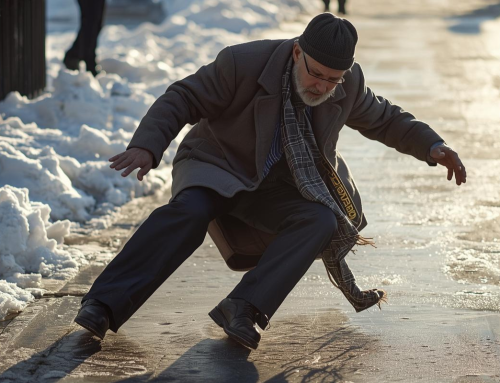Ever wondered why some people bounce back quickly after a fracture while others spend months in recovery? Healing speed isn’t just luck; it’s shaped by many factors, including the specific bone that’s broken, how it functions, and how much stress it bears in daily movement.
Some bones have excellent blood flow and minimal strain during daily activities, while others, especially weight-bearing or complex joints, take much longer. Knowing which bones heal more slowly can help you set realistic expectations and explore recovery tools that support long-term healing.

TL;DR
Some bones take much longer to heal than others, especially weight-bearing bones or those with poor blood supply. Common slow-healing fractures include the femur, tibia, humerus, clavicle, scaphoid, and talus.
Several factors can affect healing time:
- Blood supply to the bone
- Type and severity of the fracture
- Movement and weight-bearing stress
- Age, health, and lifestyle habits
Does your recovery feel slower than expected? Talk to your doctor about ways to support healing, including low-intensity pulsed ultrasound (LIPUS), which may help speed up recovery in certain cases.
Bones That Take the Longest to Heal
Some bones consistently rank among the slowest to heal due to their size, function, and location. Here's a breakdown of common long-recovery fractures—plus why they tend to take longer:
- Femur (Thighbone)
The femur is the strongest and largest bone in the body, bearing significant weight during walking and standing. A fracture here affects mobility and stability, and healing requires extensive tissue repair.- Average fracture recovery timeline: 3-6 months or more
- Why it heals slowly: High weight-bearing demands and large bone mass require extended repair time.
- Tibia (Shinbone)
The tibia supports body weight in the lower leg and is often injured in sports or high-impact falls. Because it’s close to the skin surface, tibial fractures are more prone to complications, especially when open (compound) fractures are involved.- Average fracture recovery timeline: 4-6 months
- Why it heals slowly: Limited blood supply in areas under high stress from walking or standing.
- Humerus (Upper Arm Bone)
Though not weight-bearing, the humerus plays a major role in mobility. Fractures here often involve the shoulder or elbow joints, which makes immobilization and rest more difficult.- Average fracture recovery timeline: 3-6 months
- Why it heals slowly: Complex joint involvement at the shoulder and elbow = difficulty fully immobilizing the arm.
- Clavicle (Collarbone)
The clavicle moves with nearly every upper body motion, which places continuous stress on the healing bone and increases the challenge of immobilization.- Average fracture recovery timeline: 3-5 months
- Why it heals slowly: Constant motion and difficulty stabilizing the area.
- Scaphoid (Small Wrist Bone)
This small bone in the wrist has a very poor blood supply and is often overlooked when fractured. If untreated, it’s at high risk for non-union.- Average fracture recovery timeline: 6 months or more (in some cases over a year)
- Why it heals slowly: Minimal blood flow to parts of the bone makes cell repair slower and increases the risk of long-term complications.
- Talus (Ankle Bone) and Navicular (Midfoot)
These bones in the ankle and foot are critical for mobility but have limited blood supply, making them prone to slow healing. The talus, in particular, is a small but critical bone that helps transfer weight between the leg and foot.- Average fracture recovery timeline: 6-12 months
- Why it heals slowly: Constant movement and poor circulation in the area can lead to delayed healing.
Why Do Some Fractures Take Longer Than Others to Heal?
While the body is remarkably good at repairing broken bones, the speed of fracture healing is influenced by a combination of biological and physical factors. Even with the same injury, recovery can vary dramatically from one person to another. Here’s why:
Blood Supply
Good circulation delivers oxygen and nutrients necessary for repair. Bones with poor vascularity (like the scaphoid or talus) take longer to heal and are more prone to complications like non-union.
Bone Type & Density
Bones are made of two types of tissue—cortical (compact) bone and cancellous (spongy) bone. Cortical bone is the dense, outer layer of bone that forms the shafts of our long bones, like the femur. It’s very strong but has limited blood supply, making healing a slower process. Cancellous bone is the porous, inner part of the bone found at the ends of long bones and in bones like the vertebrae. It has an excellent blood supply and heals much faster. This is why larger, denser bones require more time to repair.
Fracture Severity & Stability of the Break
The nature of the break itself is a major factor. A simple, clean break is far easier for the body to heal than a complex fracture. If the fracture site is unstable or moves during recovery, it can disrupt the formation of new bone and increase the risk of delayed union.
Movement Demands
Bones that bear weight or are critical for mobility (like the femur or clavicle) are harder to immobilize or rest completely, which can slow healing.
Age & Overall Health
As we age, healing slows. Conditions like diabetes and osteoporosis can also compromise healing. Age, smoking, and certain medications can also impact your healing time.
Bone Stimulation Therapy (LIPUS) Can Promote Bone Healing
If you're dealing with a longer-than-expected recovery or a fracture in one of the bones listed above, bone stimulation therapy may be worth exploring.
LIPUS (Low-Intensity Pulsed Ultrasound) is a non-invasive treatment used to help accelerate bone healing. It works at the cellular level by delivering mechanical pulses to stimulate bone regeneration and has been used successfully for decades in cases of delayed healing or non-union.
Why patients choose LIPUS:
- Pain-free and non-invasive
- No known side effects
- Can reduce healing time in stubborn fractures
- Easy to use at home (daily for 20 minutes)
If you’ve been told your fracture may take longer to heal, or if you’re not progressing as expected, ask your doctor whether LIPUS is an option that could support your recovery.
Moving Forward with Fracture Healing
Some bones just take longer to heal, especially those that are weight-bearing, have poor circulation, or are hard to immobilize. Understanding which bones are at higher risk for slow healing can help you manage your recovery more proactively.
Whether you're dealing with a high-risk fracture or just want to optimize your healing, combining healthy habits with options like bone stimulation therapy can help you move forward with fewer setbacks.
🔗 Want to compare healing speeds? Check out our companion article: What Bones in the Human Body Heal the Quickest from a Break?





